Clinical Training

Missouri AHEC supports the training of medical, nursing, oral health, and other health professions students, and medical residents, in health care underserved communities. AHECs facilitate preceptor and training site identification and development, assist with procurement of student housing, support students in meeting non-clinical academic requirements, and provide opportunities for students to learn about and become engaged in the community.
In addition to receiving high quality training experiences, students and residents who participate in clinical training add value to the community both economically and in patient care provided. By collaborating with MAHEC in offering clinical training, a community gains increased access to students and increased opportunities to recruit them to return to the community to practice when their training is complete.
In the 2012-2013* program year, approximately 1,000 health professions students representing over 10 disciplines (e.g., allopathic and osteopathic medicine, dentistry/dental assistant, nursing, physical therapy) completed over 6,200 weeks of AHEC facilitated training in sites across Missouri.
View Map - AHEC Training Sites for Health Professions Students
*The most recent year for which complete program data is available
ATSU-KCOM AHEC Programs
ATSU-KCOM AHEC Summer Preceptorship
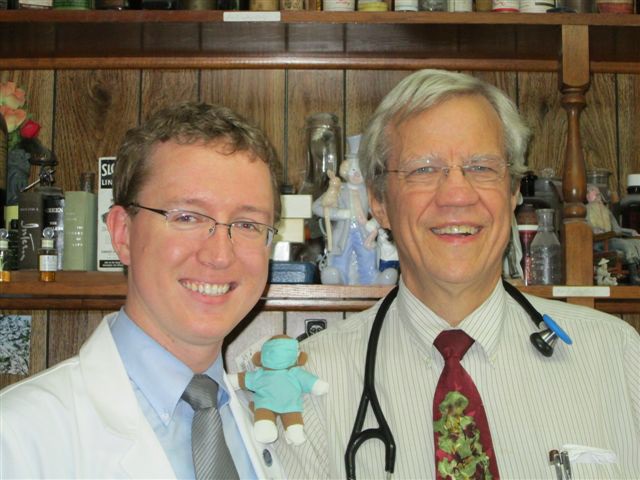 All ATSU KCOM students complete a 2-week rotation in Missouri between their first and second year of medical school. For those from out of state, this is an opportunity to see what Missouri has to offer in the way of potential practice opportunities. Preceptors in host communities include practitioners from several disciplines - family medicine, general pediatrics, internal medicine, emergency medicine, and obstetrics/gynecology.
All ATSU KCOM students complete a 2-week rotation in Missouri between their first and second year of medical school. For those from out of state, this is an opportunity to see what Missouri has to offer in the way of potential practice opportunities. Preceptors in host communities include practitioners from several disciplines - family medicine, general pediatrics, internal medicine, emergency medicine, and obstetrics/gynecology.
Results of the program:
- Students: Based on pre/post surveys, student interest in family and internal medicine and practice in sites serving the underserved (rural and Community Health Center sites) increases 20-40% on a 5-point scale as a result of their summer experience.
- Preceptors: 97% of preceptors completing the evaluation want to participate again.
Students consistently rate the experience highly:
- "Although I did mostly observations, I still felt this experience was incredibly valuable. I learned a vast amount simply by watching how my preceptor interacted with each of his patients. He truly exemplifies what care and compassion are in the medical setting. I was very impressed at seeing his take and philosophy of medicine. In the short two weeks, I feel that I have a better grasp at how to interact and get to know patients, how to take the time to take their histories, and just make them feel as comfortable as possible. I would definitely repeat this experience if there was an option."
- "My preceptor was absolutely fantastic! I hope you continue to use him as long as he is willing to take students!! He allowed me to be a real part of the healthcare of his patients. His office and support staff were excellent and supportive of helping me in anything I needed regarding learning and progressing a student physician. This experience was an amazing opportunity that gave me real-life experience in an excellent learning
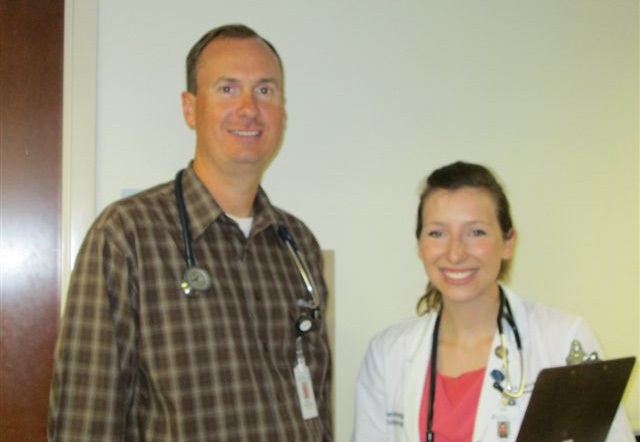 environment!"
environment!"
Research indicates that practitioners who teach, tend to stay in their rural practices longer than those that don't. Preceptors are overwhelmingly supportive of the early experiences:
- "I have had students for 22 years and enjoy being around them...They ask questions which help me keeup up to date...I enjoy teaching!"
Many clinicians have participated for years and express appreciation for the enthusiasm and eagerness of these budding practitioners. They like:
- "the student's youthful exuberance and enthusiasm;" "insight into new teachings;" "being challenged in things I haven't thought about in a while;" "giving back to the profession;" and "training future doctors and sharing my experience."
Centers implementing the program:
- ALL
ATSU-KCOM AHEC Missouri Region
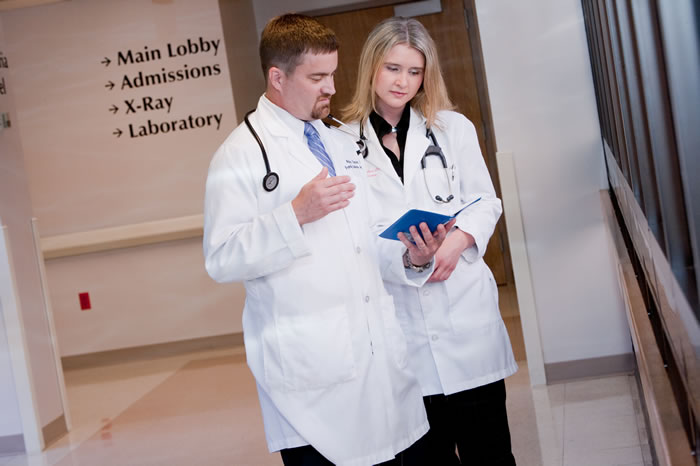 ATSU-KCOM students can choose to complete their 3rd and 4th years of clinical training at any one of several sites around the country. Ten Missouri communities serve as primary KCOM training sites with an additional 20+ sites routinely providing rural and specialty rotations. Based on connections made through Hospital Day, Regional Conference networking, site visits and word of mouth from older students, KCOM students (many with families) choose a region/site, establish homes in their assigned communities and become active community members for their two year stay.
ATSU-KCOM students can choose to complete their 3rd and 4th years of clinical training at any one of several sites around the country. Ten Missouri communities serve as primary KCOM training sites with an additional 20+ sites routinely providing rural and specialty rotations. Based on connections made through Hospital Day, Regional Conference networking, site visits and word of mouth from older students, KCOM students (many with families) choose a region/site, establish homes in their assigned communities and become active community members for their two year stay.
Students in the Missouri Region rural sites score at least as well as their peers training in larger communities and other states. Particularly in the more rural sites, the opportunity for maximum patient contact and participation in care ("hands on time") is a real plus.
Missouri's AHEC centers assist with some activities and/or coordinate local rotations work with staff at KCOM to arrange out of region rotations. Local AHEC staff involve students in community activities including youth recruitment events, screenings, and other service opportunities. At sites where students from multiple schools are training, AHECs help make the most of the resources and disciplines involved. A broader range of learning resources and interprofessional projects are the norm in multi-school sites.
The ATSU Missouri Region core sites include both urban and rural partner hospitals and 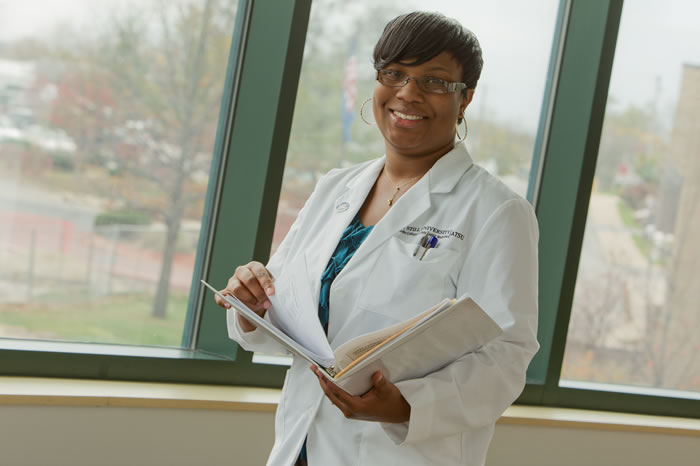 communities: Cape Girardeau, Farmington, Jefferson City, Joplin, Kennett, Kirksville, Poplar Bluff, Rolla, Springfield, St. Joseph, St. Louis Des Peres, St. Louis Christian, and West Plains.
communities: Cape Girardeau, Farmington, Jefferson City, Joplin, Kennett, Kirksville, Poplar Bluff, Rolla, Springfield, St. Joseph, St. Louis Des Peres, St. Louis Christian, and West Plains.
Results of the program:
Since the inception of the Missouri Region, more students are staying in Missouri Region sites for 3rd and 4th year training and to date 222 ATSU-KCOM AHEC Missouri Region students have established practices in Missouri.
Centers implementing the program:
- ATSU-KCOM AHEC Program Office
- Northeast Missouri AHEC
- Southeastern Missouri AHEC
- Southwest Missouri AHEC
- Mid-Missouri AHEC
- East Central Missouri AHEC
- Northwest Missouri AHEC
ATSU Interprofessional Health Partners (IPHP)
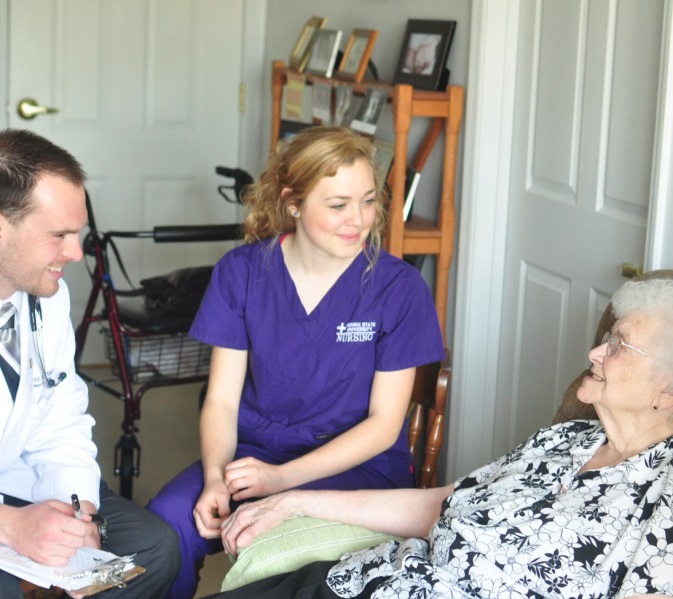 The Interprofessional Health Partners program allows students to practice interviewing skills, learn about geriatric health issues and assessment resources, and establish a professional relationship with an elder and team mates. Participating students develop knowledge, skills, and positive attitudes needed to deliver high quality, team-based care to older adult patients. The IPHP builds on a prior program initiated in 2002 in response to national concerns about medical errors and the need to equip providers with quality improvement and patient safety skills.
The Interprofessional Health Partners program allows students to practice interviewing skills, learn about geriatric health issues and assessment resources, and establish a professional relationship with an elder and team mates. Participating students develop knowledge, skills, and positive attitudes needed to deliver high quality, team-based care to older adult patients. The IPHP builds on a prior program initiated in 2002 in response to national concerns about medical errors and the need to equip providers with quality improvement and patient safety skills.
Program process:
- Osteopathic medical students from ATSU and nursing, communication disorders, health education, athletic training, and exercise science students from Truman State University participate on Health Partners teams. Dental students from ATSU's Missouri School of Dentistry and Oral Health will also be participating as of spring 2015.
- Student learning resources including geriatric assessment materials for the three home visits are provided on-line.
- Student teams work with the same geriatric patient through all three visits over a period of approximately 4 months and participate in three follow up review sessions.
- Twenty-one students / 7 teams / 4 faculty members participated in 2002 - the first year of the IP initiative. In 2014, 60 teams / 180 students are anticipated.
Results of the program:
The AHEC office regularly solicits feedback from both the students and elder participants using 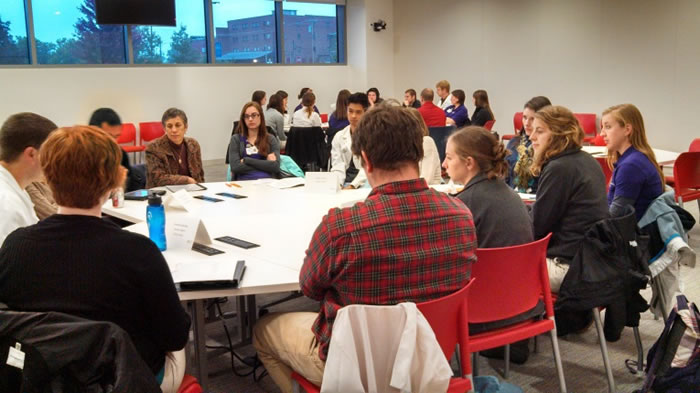 written surveys. Analysis of this feedback facilitates continuous improvement in the process and effectiveness of the program for student and elder participants. The program consistently receives high marks from students and elder participants. Student evaluations of the program are extremely positive (average 4.46 of 5). Many of the elders have been in the program for a number of years.
written surveys. Analysis of this feedback facilitates continuous improvement in the process and effectiveness of the program for student and elder participants. The program consistently receives high marks from students and elder participants. Student evaluations of the program are extremely positive (average 4.46 of 5). Many of the elders have been in the program for a number of years.
From an elder:
- "it's wonderful to see how confident, knowledgeable, and self-assured the students have become since our first visit in January. As individuals they are so diverse in background and interests so it's very interesting for us to get to know them."
From a student:
- The best is "getting to work with one patient consistently and working on team dynamics with the group."
Centers implementing the program:
- ATSU AHEC Program Office
Other MAHEC Programs
MU-AHEC Summer Community Program
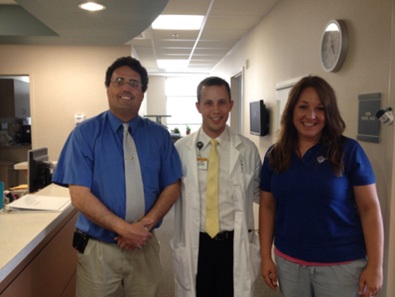 Local hospitals across the state sponsor medical students to work one-on-one with community-based physicians for 4-8 weeks after their M1 year. Many students return to hometown areas and live at home. Missouri AHEC housing and facilities are utilized whenever possible. Below are some student's comments after their experience:
Local hospitals across the state sponsor medical students to work one-on-one with community-based physicians for 4-8 weeks after their M1 year. Many students return to hometown areas and live at home. Missouri AHEC housing and facilities are utilized whenever possible. Below are some student's comments after their experience:
- "The experience was invaluable for learning about clinical flow and putting into practice what information I had learned in the first year of medical school. I enjoyed the day to day immersion and that my preceptors would give me a bit of "learning by doing" when they would send me into an exam room to interview & examine the patient. The talking through my reasoning and differential diagnoses was also very useful when you had a patient to connect the information to."
- "I enjoyed being able to practice histories and physical exams. I also liked getting to be involved in the operating room and getting to know the surgical teams at the hospital."
- "I believe that I was given an excellent opportunity to observe what a real physician was like in clinical practice. At the same time, I was given the opportunity to vastly improve my clinical interviewing skills."
Results of the program:
51% of past participants have chosen primary care residencies, and 31% are now practicing in rural Missouri. Students consistently rate the experience highly.
Centers implementing the program:
- ALL
MU-AHEC Rural Track Clerkship Program
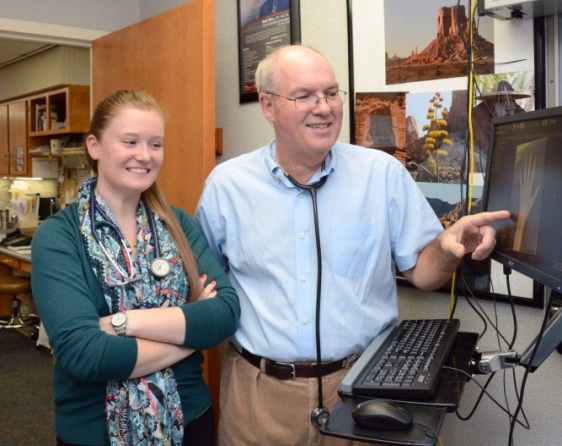 The MU Rural Track Clerkship Program offers third-year medical students clinical education in community-based educational centers throughout the state. Students are given the unique opportunity to live and work in one of these communities to gain personal experience regarding the rewards of rural practice. Students may complete up to three core clerkships developed and approved by the School of Medicine's clinical departments.
The MU Rural Track Clerkship Program offers third-year medical students clinical education in community-based educational centers throughout the state. Students are given the unique opportunity to live and work in one of these communities to gain personal experience regarding the rewards of rural practice. Students may complete up to three core clerkships developed and approved by the School of Medicine's clinical departments.
The program aims to increase the number of physicians who choose to practice in rural Missouri. Community-based physicians serve as faculty as well as role models, guiding students through the program and serving as mentors for professional as well as personal development.
Results of the program:
Since 1995, 320 medical students have participated in the Rural Track Clerkship Program.
Of the 298 graduating Rural Track Clerkship participants, 52% matched in a primary care residency. Of the 168 Rural Track Clerkship alumni who are now in practice, 58% are practicing in a rural location and 39% are practicing in rural Missouri.
Centers implementing the program:
MU-AHEC Community Integration Program
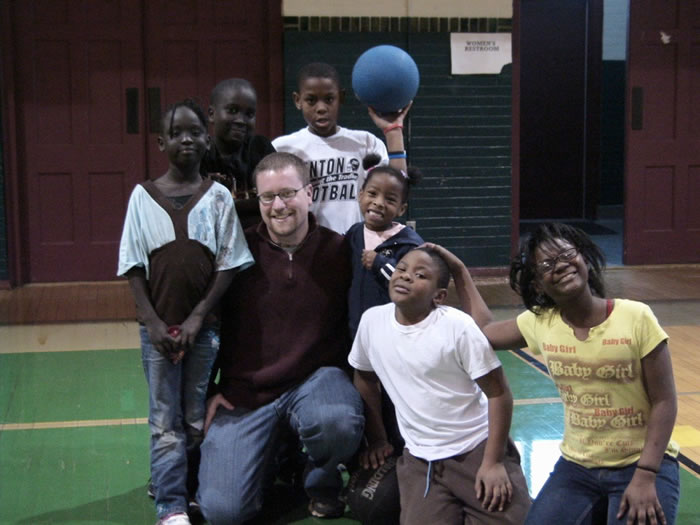 MU-AHEC created the Community Integration Program as part of the Rural Track Clerkship Program to give third year medical students the opportunity to participate in service learning to more fully integrate rural track clerkship students into the community to:
MU-AHEC created the Community Integration Program as part of the Rural Track Clerkship Program to give third year medical students the opportunity to participate in service learning to more fully integrate rural track clerkship students into the community to:
- enhance their knowledge about the community in which they are assigned to work and live in an effort to further influence students to return to rural areas to practice;
- complement their clinical education through service learning activities; and
- demonstrate the importance of community service through active participation and self-reflection
The Community Integration Program is a voluntary program, but all Rural Track Clerkship students are highly encouraged to participate at some level. Participating students choose from three levels of involvement.
Results of the program:
- From 2007-2013, 119 students have participated in CIP
- Since 2007, approximately 53% of the participants developed a level 3 service learning project, the highest level of involvement.
Participants report:
- "CIP opens your eyes to how communities come together to help others' needs. It makes you realize you are part of something bigger than just going to school."
- "My work with the issue became more than just a Community Integration Project, I became invested in the people and protecting their health."
Centers implementing the program:
Health Professions Student Clinical Rotations
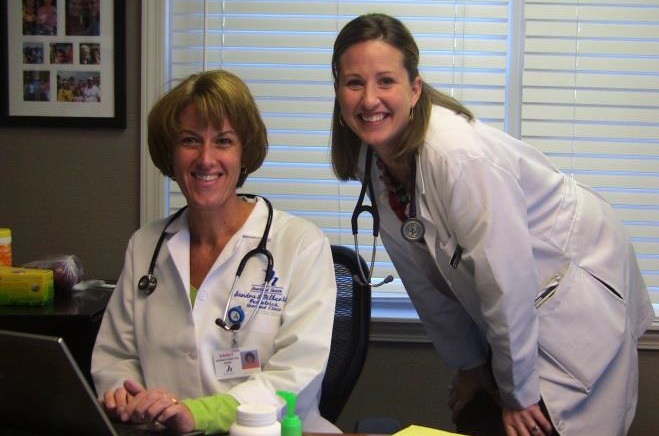 In addition to facilitating educational experiences for medical students in health care delivery sites, regional AHECs work with other health professions schools to place their students for clinical experiences in primary care and hospital settings. With Missouri facing shortages of a variety of health professions, this work is vital to improving access to care for Missouri's currently underserved populations.
In addition to facilitating educational experiences for medical students in health care delivery sites, regional AHECs work with other health professions schools to place their students for clinical experiences in primary care and hospital settings. With Missouri facing shortages of a variety of health professions, this work is vital to improving access to care for Missouri's currently underserved populations.
Regional AHECs facilitate clinical rotations for Nurse Practitioner students from at least 6 Missouri nursing schools. These 4-8 week clinical assignments focus on pediatrics, obstetrics/gynecology, and family medicine. Many experiences involve delivering care to underserved poulations in settings such as Community Health Centers. Northeast Missouri AHEC collaborates with the local Community Health Center to bring dental students from the University of Missouri - Kansas City to northeast Missouri for clinical rotations. These 2-week rotations expose the students to the unique challenges of delivering care to underserved individuals in a rural community.
AHECs also support clinical education assignments for nurses training in nurse anesthesia (CRNA) programs. These 6-week rotations play a vital role in preparing these future practitioners to deliver anesthesia services needed in hospitals across Missouri. In addition, AHECs arrange clinical experiences in primary care and other specialties for Physician Assistant students.
Similar to AHEC's work with medical students, the work with students in other health professions is focused on preparing them to provide needed care to underserved populations and encouraging them to practice in underserved areas where they have completed their education.
Results of the program:
Each of the regional AHECs that facilitate clinical 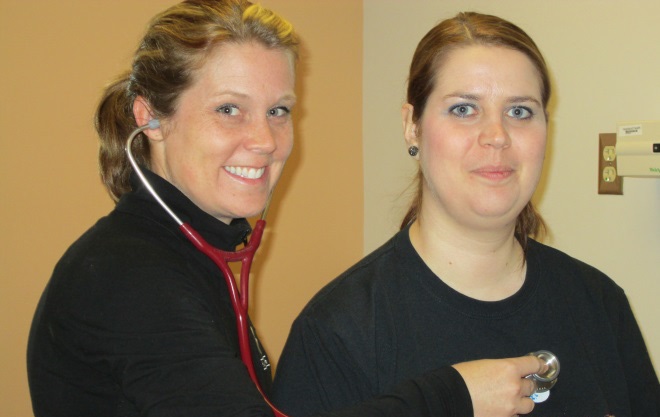 experiences can recount "success stories" of students who have participated in AHEC-affiliated clinical experiences and have returned to their regions to practice. For example, NWMO AHEC recounts the success of a student who participated in AHEC career development programs while in high school and nursing school. While in nurse practitioner training, many of her clinical rotations were coordinated through NWMO AHEC. She now delivers primary care as a Family Nurse Practitioner in the St. Joseph area.
experiences can recount "success stories" of students who have participated in AHEC-affiliated clinical experiences and have returned to their regions to practice. For example, NWMO AHEC recounts the success of a student who participated in AHEC career development programs while in high school and nursing school. While in nurse practitioner training, many of her clinical rotations were coordinated through NWMO AHEC. She now delivers primary care as a Family Nurse Practitioner in the St. Joseph area.
Centers implementing the program:
SLU-AHEC Interprofessional Student Training
The 2001 Institute of Medicine's report, Crossing the Quality Chasm, called for a redesign of the U.S. healthcare system to address issues of improving quality of patient health outcomes and improving patient safety. Recommendations include care that is patient-centered, coordinated, and is provided by interprofessional teams of health care providers. In response to this call for change, the SLU Program Office has developed and implemented multiple programs for interprofessional student training including:
Interprofessional Grand Rounds
A panel of interprofessional faculty and clinicians demonstrate the discussion of complicated cases that require more than one profession's input and care to attain positive patient outcomes. Faculty asks questions of other professions and share what they contribute to the care of this patient. Students observe and ask questions of the panel, then must complete a critical reflection paper and discuss the case in a small group.
Interprofessional Team Seminars
This is a 6-module course engaging over 650 students from 7 professions (medicine, physician assistant, accelerated nursing, physical therapy, occupational therapy, dietetics, social work, and the St. Louis College of Pharmacy) who are currently engaged in their clinical training. Students meet in small groups and discuss complex patient cases. Students come to understand the roles and scope of practice of other professions while addressing issues of patient-centered care, patient safety, personal and healthcare system bias, low health literacy, and working with difficult patients.
Community-based, Interprofessional Team Practicum
This 14-week course requires students to collaborate as an interprofessional team to understand and respond to the needs of a community-based organization. Teams of 5-6 students work with over 30 community agencies to implement a project in support of the agency and/or community. The goal is for students to apply all aspects of their training to work as a team to accomplish the agency's goal. Students must demonstrate sensitivity to community needs, implement evidence-based practice, and present a professional poster of their work.
Curriculum
SLU and other MAHEC partners plan and implement interprofessional educational experiences using local, national and international resources including Open School courses from the Institute for Healthcare Improvement (IHI); Core Competencies for Interprofessional Collaborative Practice from the Interprofessional Education Collaborative; TeamSTEPPS® from the US Agency for Healthcare Research and Quality and the John Hartford Geriatric Interdisciplinary Team Training Curriculum
Nurses Aid Training Consortium
The NEMO AHEC Certified Nursing Assistant Consortium was created in 1994 to fulfill a growing need to train and certify nursing assistants. The consortium is a unique educational partnership between NEMO AHEC, North Central Missouri College (NCMC) in Trenton, and seven long-term care facilities. This partnership works much like a "group purchasing agreement" and allows area facilities to "buy" C.N.A. instruction at a significantly reduced rate.
Students who participate in the C.N.A. Consortium training receive 91 hours of classroom and lab instruction over a six-week period. Students meet two days a week from 8:00 am - 4:30 pm with a 30-minute lunch break. Instruction is provided by an approved instructor by the Missouri Division of Aging and meets the requirements of Missouri Code of State Regulations for Nurse Assistant Training. Six courses are offered to consortium members each year on the NCMC campus.
While the original class model was designed as "open-entry and open-exit", AHEC and NCMC - with support of nursing home partners - opted to restructure the training into block courses in 2005. This change fostered greater student, instructor and employer satisfaction, largely because the new structure:
- encourage development of supportive cohorts of approximately 10-14 students who work collaboratively for individual and group success;
- assured that all students were presented the same content in successive, well-planned lessons; and
- reinforced student personal responsibility to be prepared, punctual, and professional in the classroom.
In addition to classroom instruction, students are required to complete 100 hours of on-the-job training under the direction of a C.N.A. Clinical Instructor; and take the state certifying exam with a registered C.N.A. Examiner. This exam includes both written and practicum components.
Results of the program:
Since September 2006, 457 students have enrolled in the classroom portion of C.N.A. training, with an overall pass rate of nearly 90%.
Centers implementing the program:
SLU AHEC, School of Medicine Community-Based Family Medicine Clinical Training
Family Medicine Clerkship
As a part of their clinical training at Saint Louis University School of Medicine, third year medical students participate in a 6 week clerkship in family medicine. SLU-AHEC partners with over 70 family medicine physicians across the St. Louis region as well as the SLU Family Medicine and Mercy Family Medicine Residency programs. Ninety-five percent of the family medicine clinical training occurs at the community sites. In addition, fifty percent of these clinical sites are located in medically underserved areas, including Federally Qualified Health Center (FQHCs). An average of 175 students per year complete clinical training across these community-based sites.
Family Medicine Summer Preceptorship
Using the partnerships forged with the community-based clinical sites described above, SLU students completing their first year of medical school are also offered the opportunity to complete a six-week community-based experience with family medicine clinicians. During this summer program, 5 to 6 students each year work an average of 20-30 hours per week. Students develop skills in patient-centered communication and assessment skills, including successful history taking in the family practice setting.
Collaboration with the St. Louis Integrated Health Network (IHN)
The St. Louis IHN provides coordination for the entire safety-net system of hospitals and federally qualified health centers (FQHCs) in the St. Louis Region. This collaboration supports medical student engagement with IHN Community Referral Coordinator (CRC) located in the Hospital Emergency Departments in the region. The CRC helps patients navigate the system and links them back to a primary care provider at the FQHCs. Students learn about patient care needs, barriers for accessing care, resources and system navigation, in addition to directly working with patients.
Centers implementing the program:
SLU AHEC Family Medicine Residency Programs
St. Mary's / Family Care
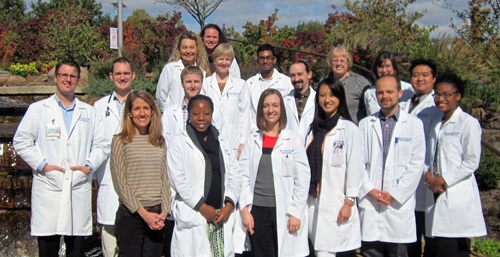 The SLU Family Medicine Residency located at the Family Care Community Health Center (FQHC) welcomes four new residents each year, for a total of 12 residents in the program. The focus of the SLU / St. Mary's Program is to prepare family medicine physicians for a wide variety of urban practice, particularly in meeting the challenge of caring for underserved families and communities. We offer high quality hands-on individualized teaching from our experienced family physician faculty in a collaborative setting. Ambulatory care occurs at the Family Care Health Center in South St. Louis (Holly Hills). Inpatient training and care occurs at the SSM St. Mary's Hospital. The affiliation with the SLU School of Medicine supports strong academic and research opportunities for the residents. The additional partnership with the SLU School of Public Health offers the opportunity for additional public health training beyond the residency, including a Masters of Public Health degree.
The SLU Family Medicine Residency located at the Family Care Community Health Center (FQHC) welcomes four new residents each year, for a total of 12 residents in the program. The focus of the SLU / St. Mary's Program is to prepare family medicine physicians for a wide variety of urban practice, particularly in meeting the challenge of caring for underserved families and communities. We offer high quality hands-on individualized teaching from our experienced family physician faculty in a collaborative setting. Ambulatory care occurs at the Family Care Health Center in South St. Louis (Holly Hills). Inpatient training and care occurs at the SSM St. Mary's Hospital. The affiliation with the SLU School of Medicine supports strong academic and research opportunities for the residents. The additional partnership with the SLU School of Public Health offers the opportunity for additional public health training beyond the residency, including a Masters of Public Health degree.
St. Elizabeth's Hospital, Belleville
Established in 1996 and managed by the Department of Family and Community Medicine since 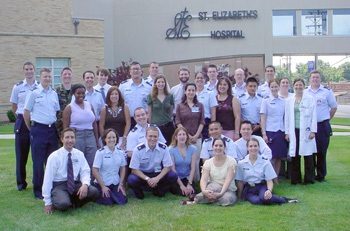 1997, this SLU Family Medicine Residency Program is unique in that it is a merger of a community-based setting, an academic center, and a military-based residency through a partnership with St. Elizabeth's Hospital, Southern Illinois Healthcare Foundation, and Scott Air Force Base. The program is able to utilize the resources of the community, the medical school, and the military to provide our residents with training in a variety of locations and with a diverse patient population. In addition, the residency provides a strong focus on the needs in a rural community.
1997, this SLU Family Medicine Residency Program is unique in that it is a merger of a community-based setting, an academic center, and a military-based residency through a partnership with St. Elizabeth's Hospital, Southern Illinois Healthcare Foundation, and Scott Air Force Base. The program is able to utilize the resources of the community, the medical school, and the military to provide our residents with training in a variety of locations and with a diverse patient population. In addition, the residency provides a strong focus on the needs in a rural community.








